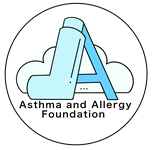ALLERGY INFORMATION
Allergy information
What is an allergy?
Allergies are a common immune system response to substances that are typically harmless to most people. When an individual with allergies comes into contact with an allergen, their immune system reacts by releasing chemicals, such as histamine, which can lead to various symptoms.
Common Allergens include:
- Pollen
- Dust mites
- Certain foods
- Insect stings
- Certain medications
- Pet hair
Common Signs of a Mild Food Allergy
Skin Reactions:
Hives (itchy, raised welts)
Eczema flare-ups
Red, itchy skin
Gastrointestinal Symptoms:
Nausea
Vomiting
Diarrhoea
Stomach cramps
Respiratory Symptoms:
Sneezing
Nasal congestion
Runny nose
Itchy or watery eyes
Oral Symptoms:
Itching or swelling of the mouth, throat, or lips
Tingling sensation in the mouth
Fatigue:
General tiredness or lethargy after consuming the allergenic food
These symptoms can vary in intensity and may appear soon after consuming the allergenic food. If you suspect a food allergy, it’s important to consult a healthcare professional for proper diagnosis and management.
How to manage your Allergy
In most cases the most effective and ideal way of managing your allergy is to avoid the allergen that caused the reaction.
If you have a food allergy you should always check a food’s ingredient list for allergens before eating it.
There are many medications available to help control the symptoms of allergic reactions.
It’s important to consult a healthcare professional for proper diagnosis and management.
- Take an antihistamine: Over-the-counter antihistamines like cetirizine (Zyrtec), loratadine (Claritin), or diphenhydramine (Benadryl) can help relieve mild symptoms like itching, hives, or a runny nose.
- Apply a cold compress: Placing a cool, damp cloth on the affected area can help reduce swelling and itching.
- Avoid scratching: Scratching can worsen the reaction and lead to further skin irritation.
- Monitor the reaction: If the symptoms persist or worsen, or if you develop difficulty breathing, seek medical attention immediately, as this could be a sign of a more severe allergic reaction.
There are 14 Common Food Allergens
- Milk:
- Includes cow’s milk and dairy products.
- Eggs:
- Found in both egg whites and yolks.
- Peanuts:
- A common legume allergen.
- Tree Nuts:
- Includes almonds, walnuts, hazelnuts, cashews, pistachios, and Brazil nuts.
- Fish:
- Common types include salmon, tuna, and cod.
- Shellfish:
- Includes crustaceans and molluscs, such as shrimp, crab, and clams.
- Wheat:
- Found in many baked goods and processed foods.
- Soy:
- Commonly found in tofu, soy sauce, and many processed foods.
- Sesame:
- Increasingly recognised as a common allergen, found in seeds and oils.
- Mustard:
- Often used in condiments and dressings.
- Celery:
- Can be found in soups, salads, and as a snack.
- Lupin Beans:
- A legume that can be found in flour and some baked goods.
- Sulphites:
- Used as preservatives in some dried fruits, wine, and processed foods; can cause allergic reactions in sensitive individuals.
- Gluten:
- A protein found in wheat, barley, and rye, often a concern for those with celiac disease.
There are several common Non-Food Allergens (this is not an exhaustive list)
Mould:
- Fungi that can grow indoors and outdoors, releasing spores into the air.
Animals:
- Skin flakes, saliva, and urine from animals (especially cats and dogs) that can trigger allergies.
Latex:
- Found in products like gloves, balloons, and some medical devices; can cause allergic reactions in sensitive individuals.
Insect Stings:
- Venom from bees, wasps and hornets, can cause severe allergic reactions.
Chlorhexidine:
- An antiseptic used in medical settings and personal care products that can trigger allergic reactions in some individuals.
PEGs (Polyethylene Glycols):
- Commonly used as emulsifiers and humectants in cosmetics and pharmaceuticals; can cause skin irritation or allergic reactions in sensitive individuals.
Medicines:
- For example, commonly prescribed antibiotics, aspirin and topical Creams and Ointments.
Cosmetics and Hair Dye
- Fragrances:
Often found in cosmetics and personal care products, they can trigger allergic reactions in sensitive individuals. - Preservatives:
Commonly used to prevent microbial growth in cosmetics; ingredients like parabens can cause skin irritations. - Hair Dye Ingredients:
Chemicals such as para-phenylenediamine (PPD) in hair dyes can lead to severe allergic reactions.
What is Anaphylaxis?
- Anaphylaxis is a severe and potentially life-threatening reaction to a trigger/allergen!
- Anaphylactic shock is a rare but a severe allergic reaction that needs immediate intervention.
- It’s most often caused by an allergy to food, insect bites, or certain medications.
- People with known anaphylaxis will carry 2 Adrenaline Auto Injectors commonly known as an EpiPen.
Symptoms of Anaphylaxis?
Most healthcare professionals consider an allergic reaction to be anaphylaxis when it involves difficulty in breathing or affects the heart rhythm or the blood pressure. Any one or more of the following symptoms may be present
- Airway: Swelling in throat, tongue, upper airways. Hoarse voice /difficulty swallowing.
- Breathing: Sudden onset of wheezing, noisy breathing, difficulty breathing.
- Circulation: Dizziness, feeling faint, confused, pale clammy skin, loss of consciousness.
- Other symptoms that might be present include rash/hives, tingly or itchy mouth/lips, stomach pain, vomiting.
What to do if someone is in anaphylactic shock:
Anaphylaxis is a medical emergency.
It can be LIFE THREATENING if not treated quickly.
It is recommended that the AAI (EpiPen) is administered immediately and 999 should be called.
The patient should lie flat on their back, with their 𝗟𝗘𝗚𝗦 𝗘𝗟𝗘𝗩𝗔𝗧𝗘𝗗 where possible (such as on a chair or cushion).
Avoid any 𝗦𝗨𝗗𝗗𝗘𝗡 changes in their posture – this is extremely important.
The patient 𝗠𝗨𝗦𝗧 𝗡𝗢𝗧 be allowed to walk around, stand up or sit in a chair, even if they start to feel better.
If they struggle to breathe, they can sit up AGAINST A WALL but only for as long as REQUIRED.

It’s recommended to hold the EpiPen for 10 seconds instead of the usual 3 seconds. This longer duration ensures that the medication is delivered effectively, as it can sometimes be challenging to judge such a short timeframe accurately.
External links – For more information about Allergies you can visit:
- https://www.allergyschool.org.uk/
- https://www.anaphylaxis.org.uk/allergywise/
- https://www.nhs.uk/conditions/allergies/
- http://www.nhs.uk/Conditions/Allergies/Pages/Introduction.aspx
- http://www.nhs.uk/conditions/rhinitis—allergic/Pages/Introduction.aspx
- http://www.nhs.uk/conditions/Anaphylaxis/Pages/Introduction.aspx
- http://www.nhs.uk/conditions/Antihistamines/Pages/Introduction.aspx
- http://www.nhs.uk/Conditions/food-allergy/Pages/Intro1.asp
(Reference Source NHS inform and above)




